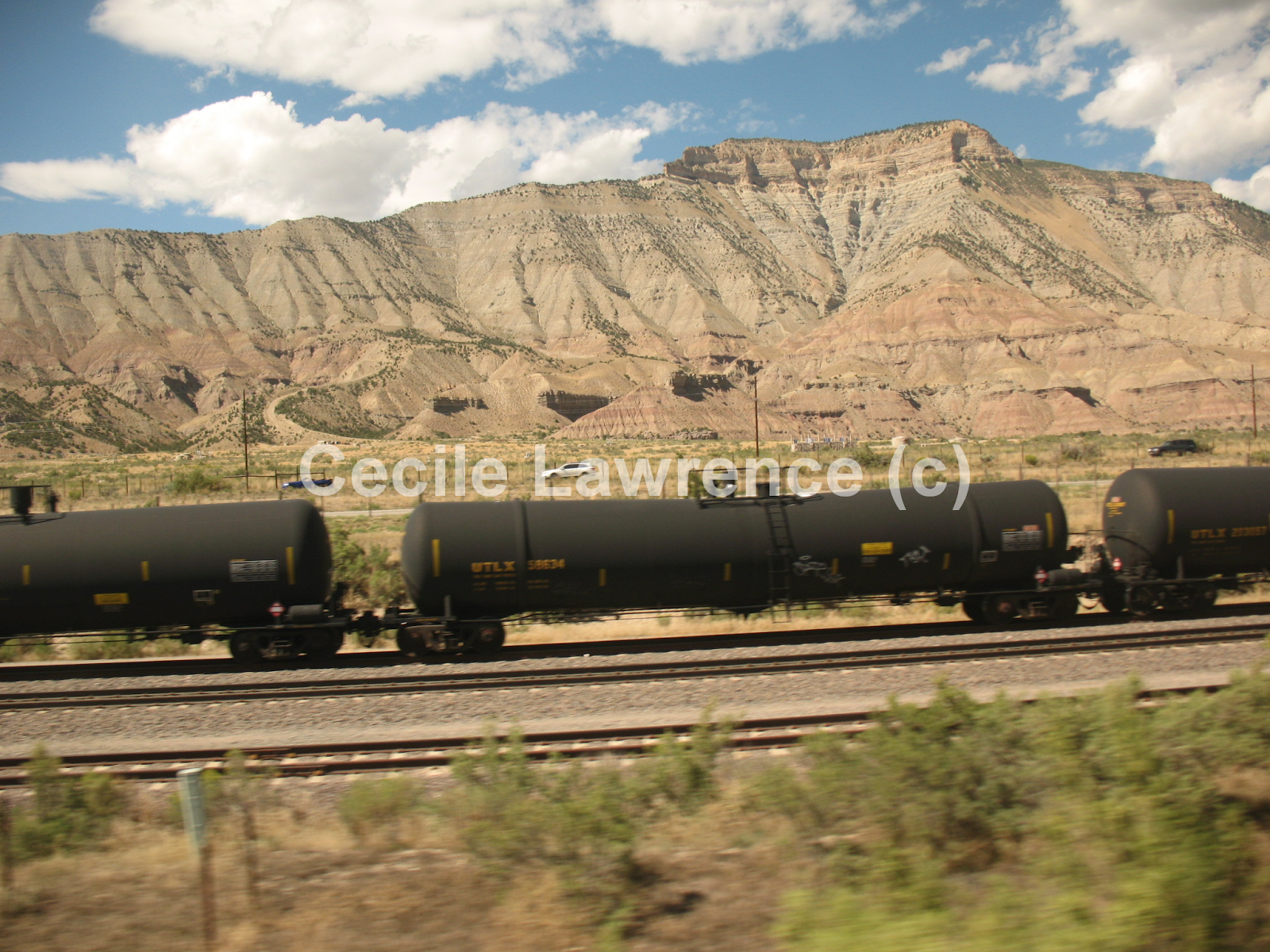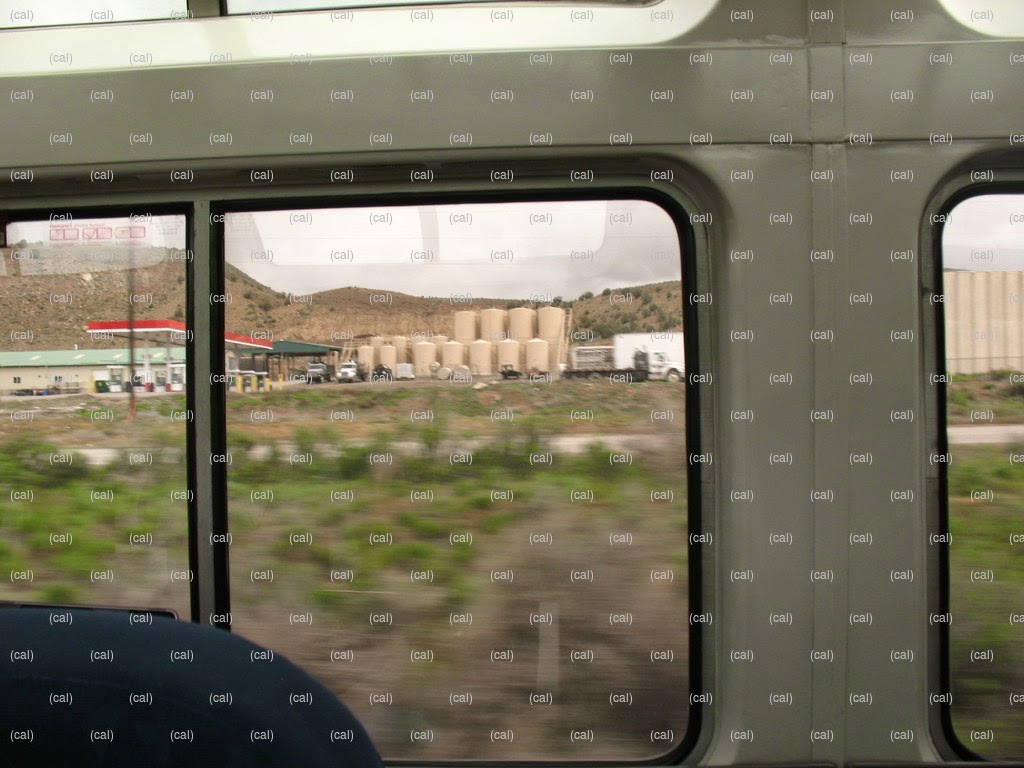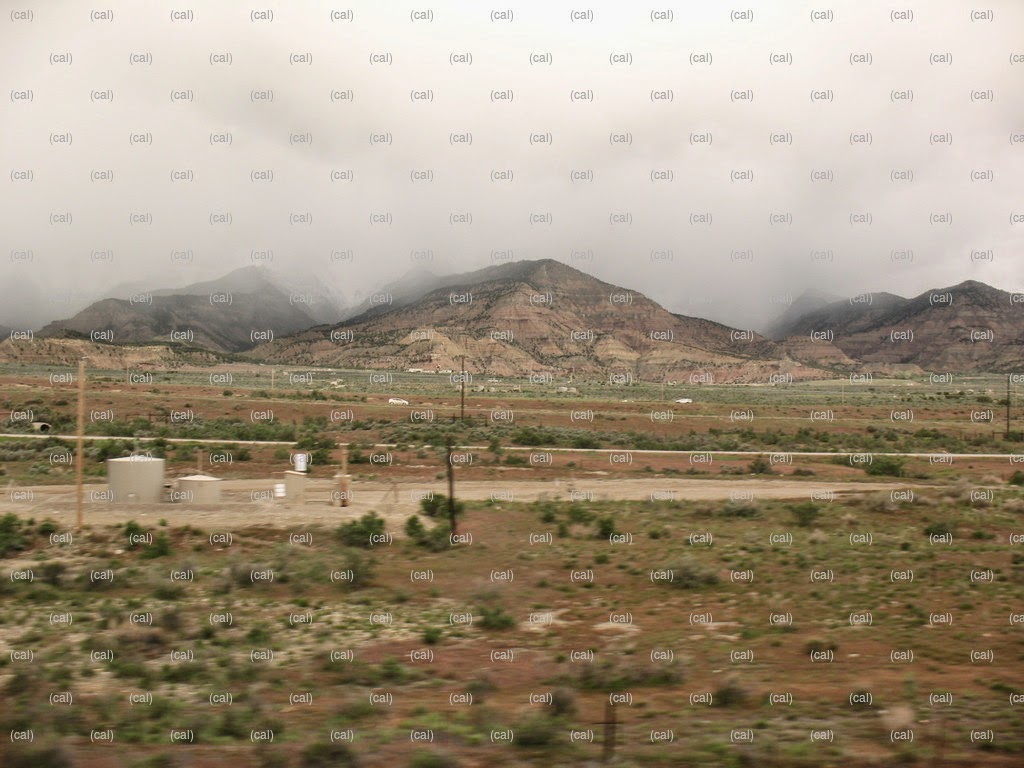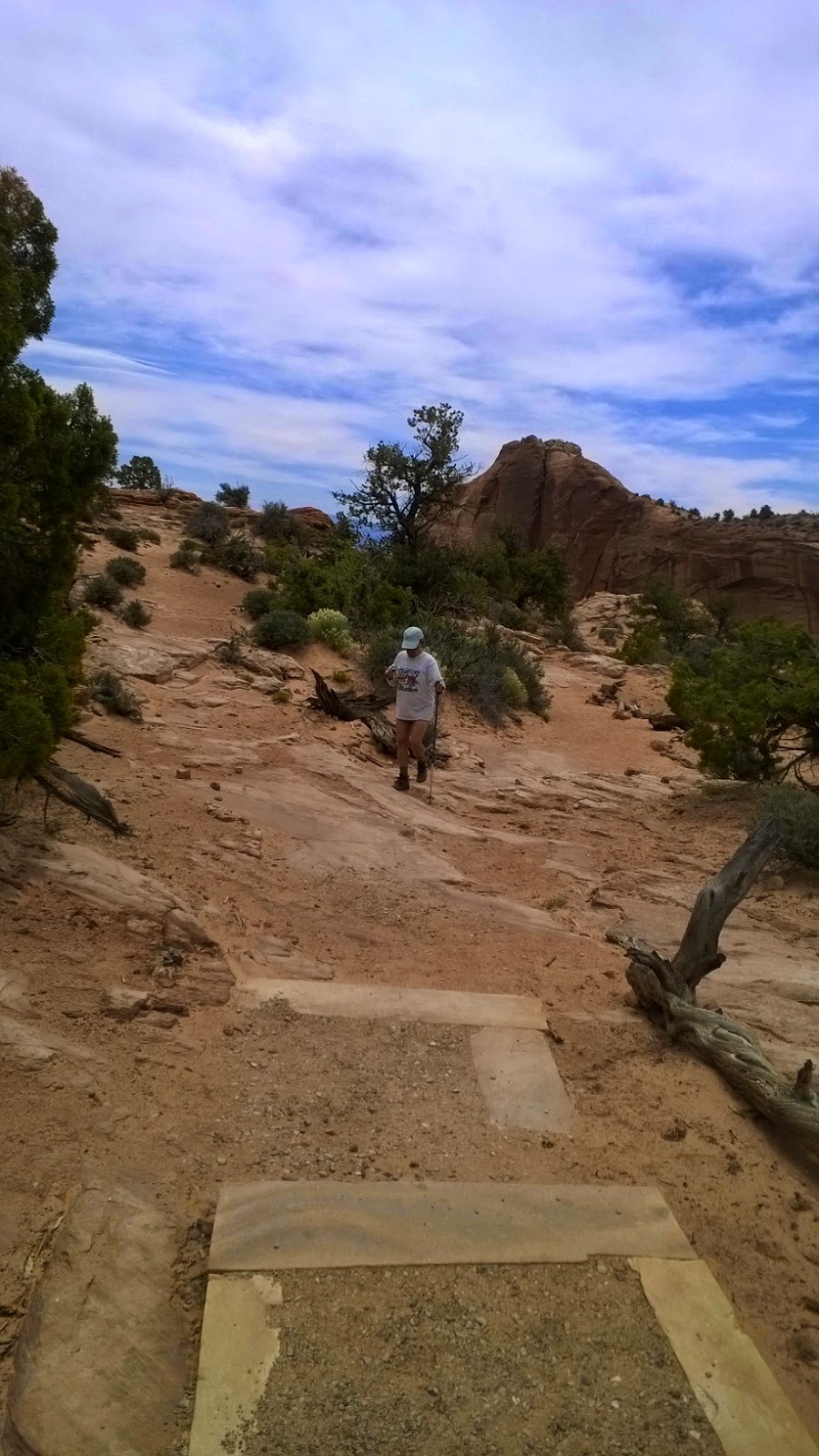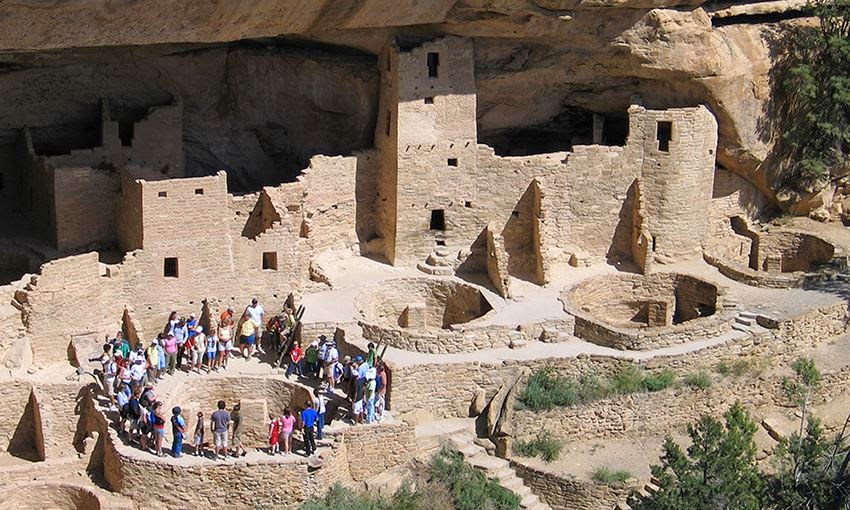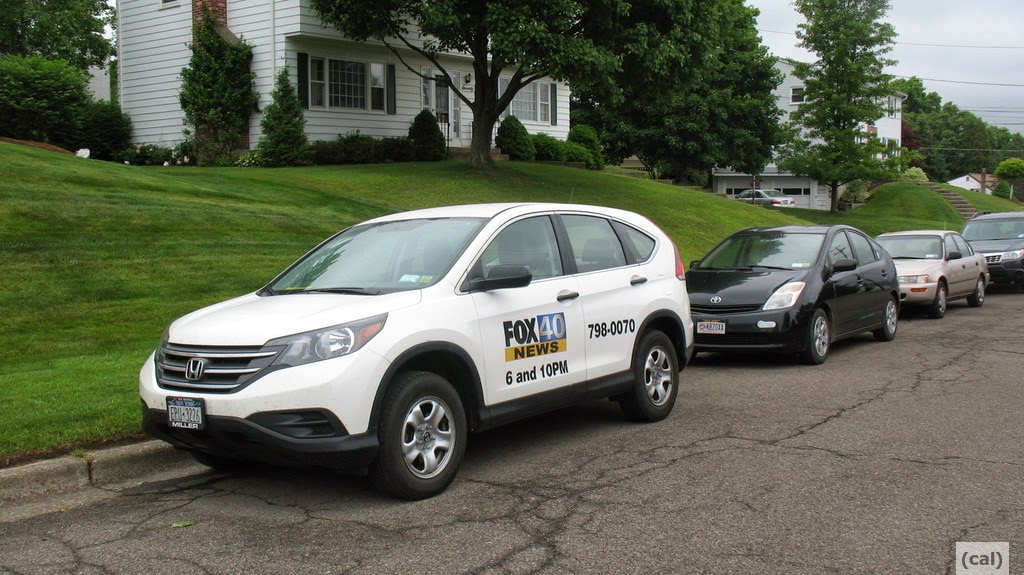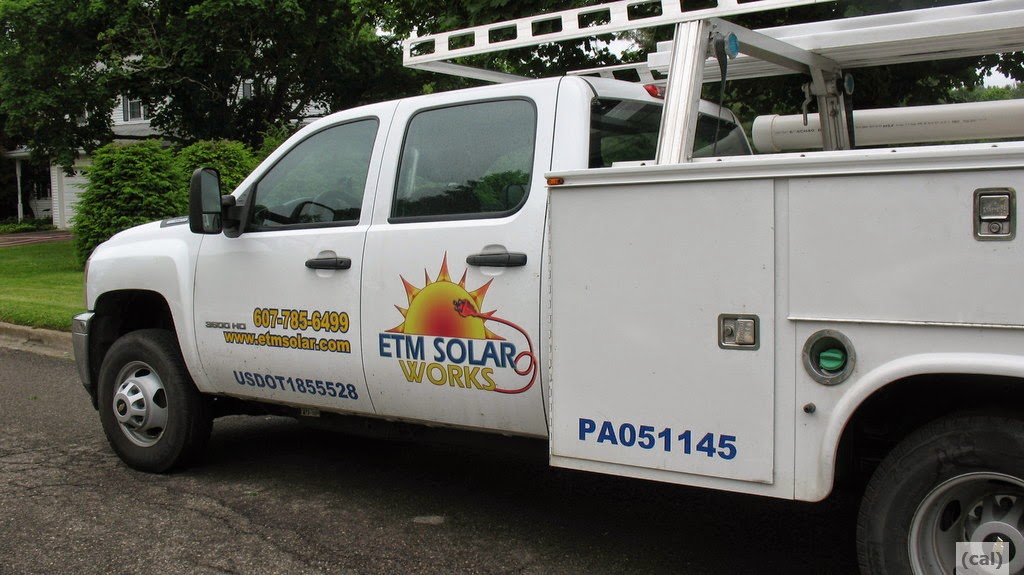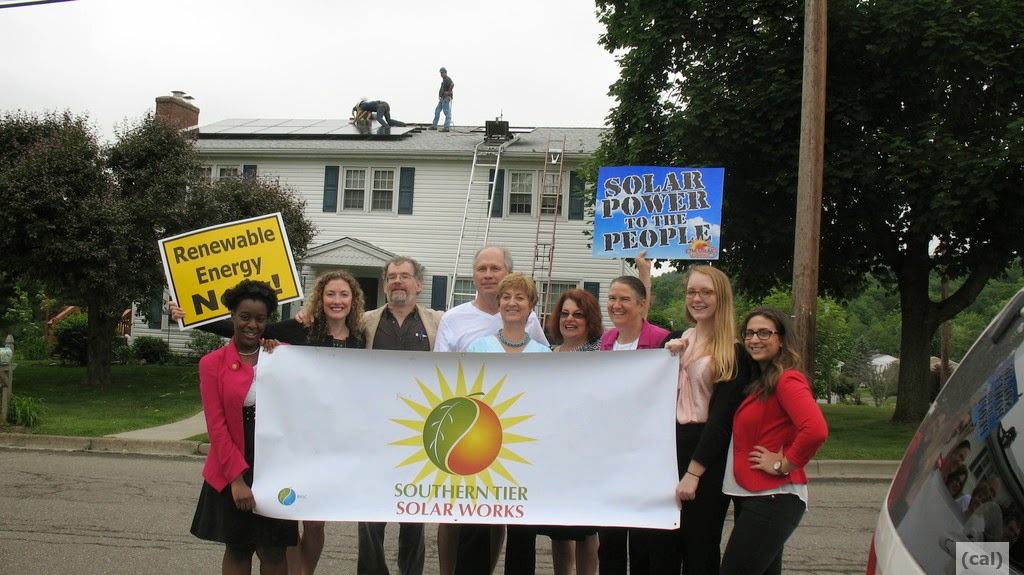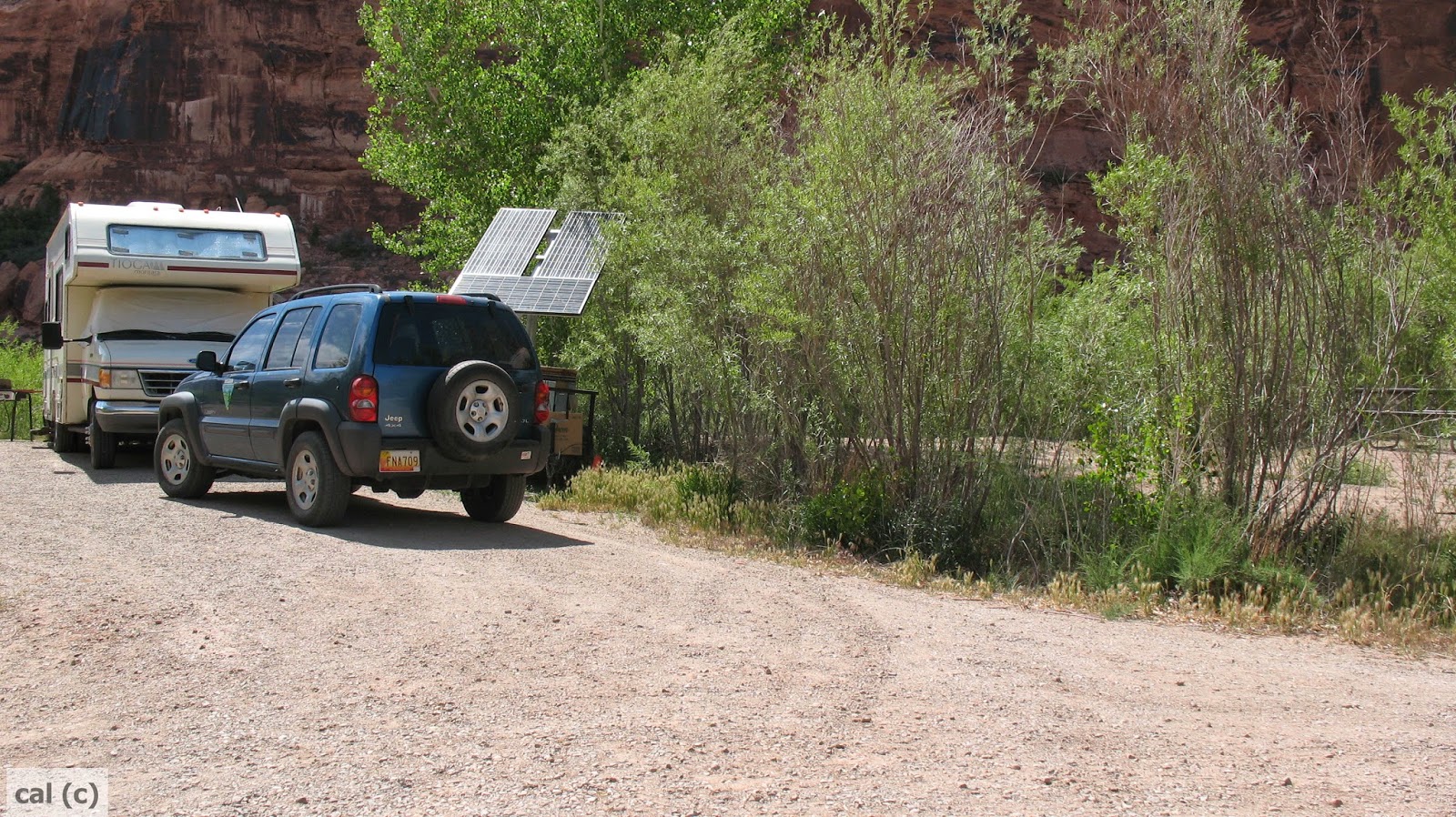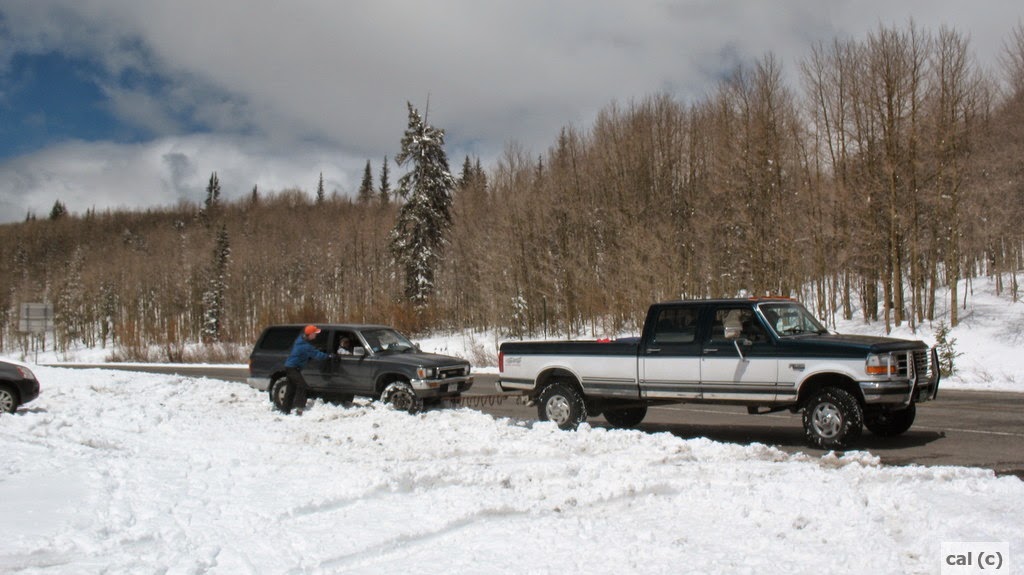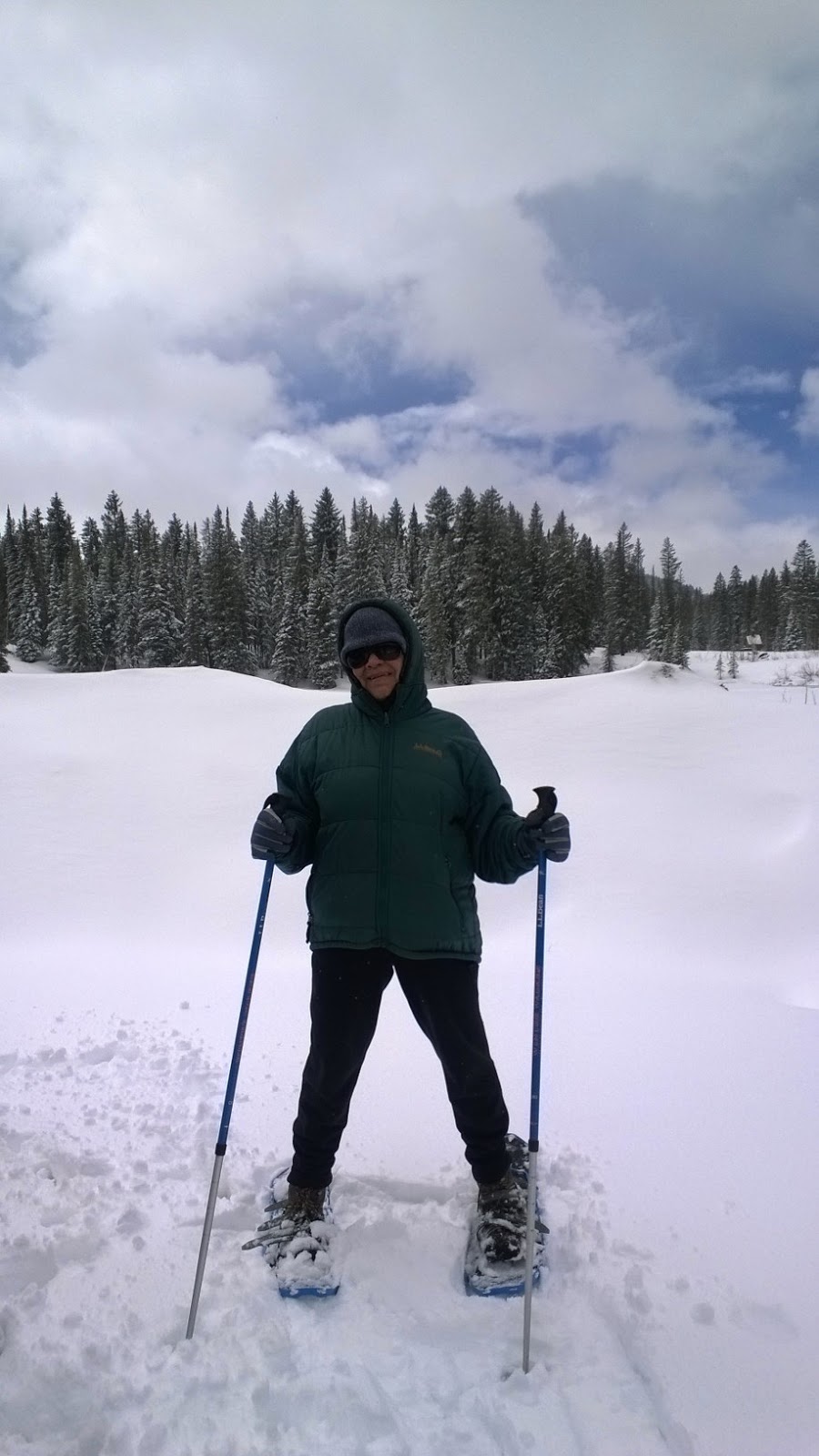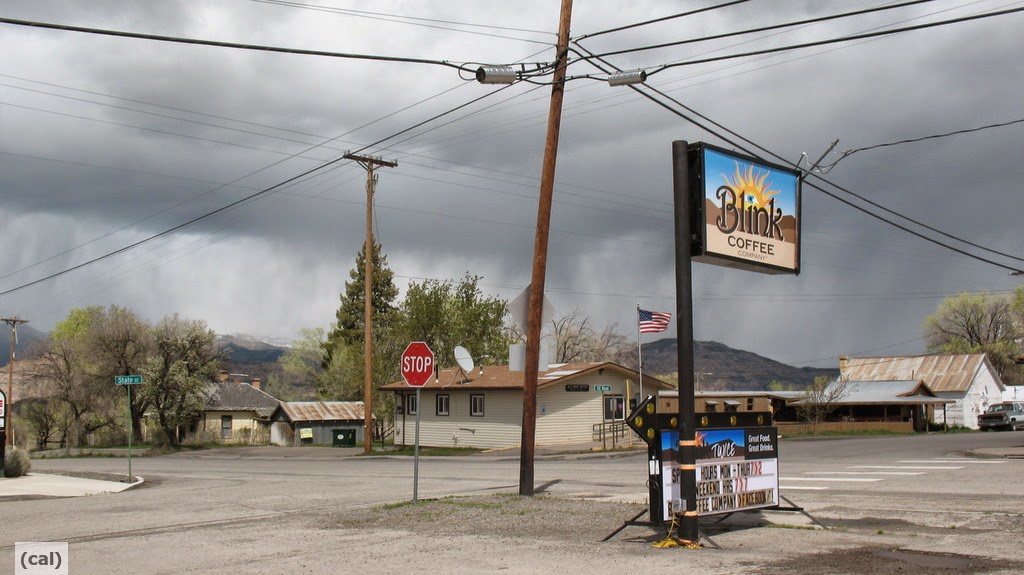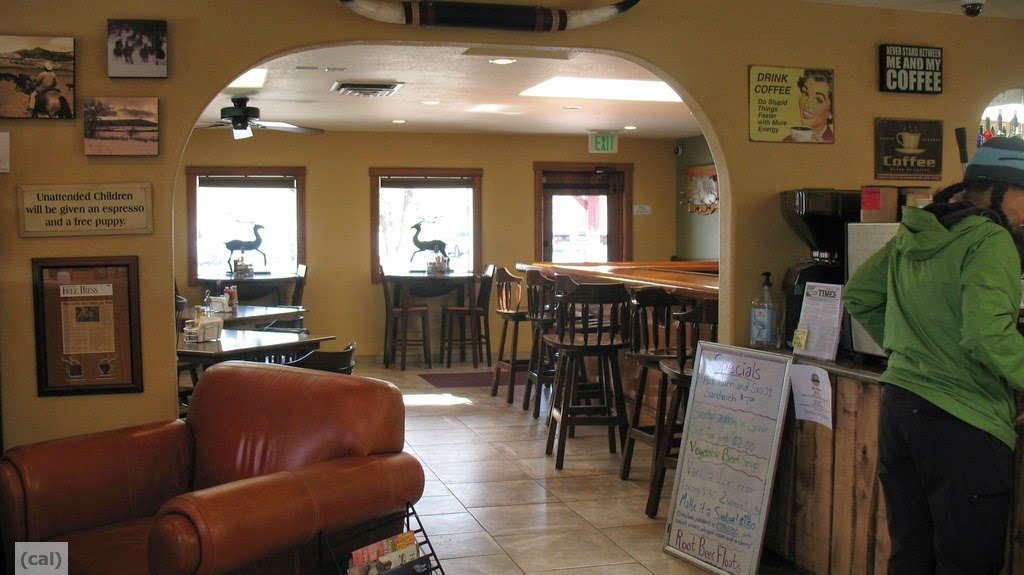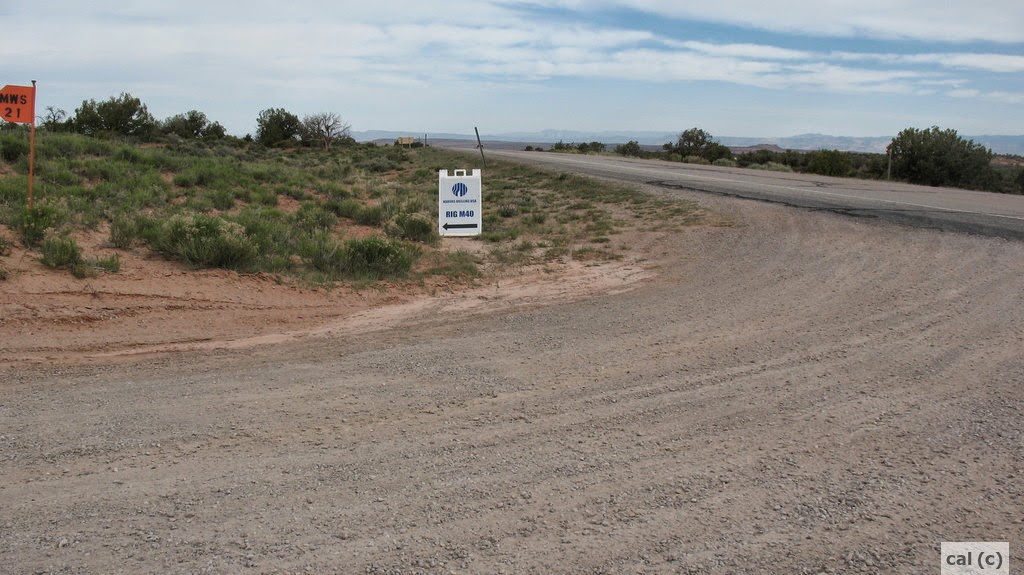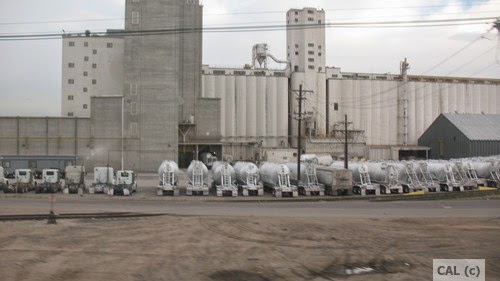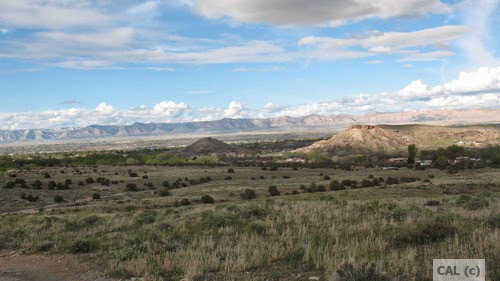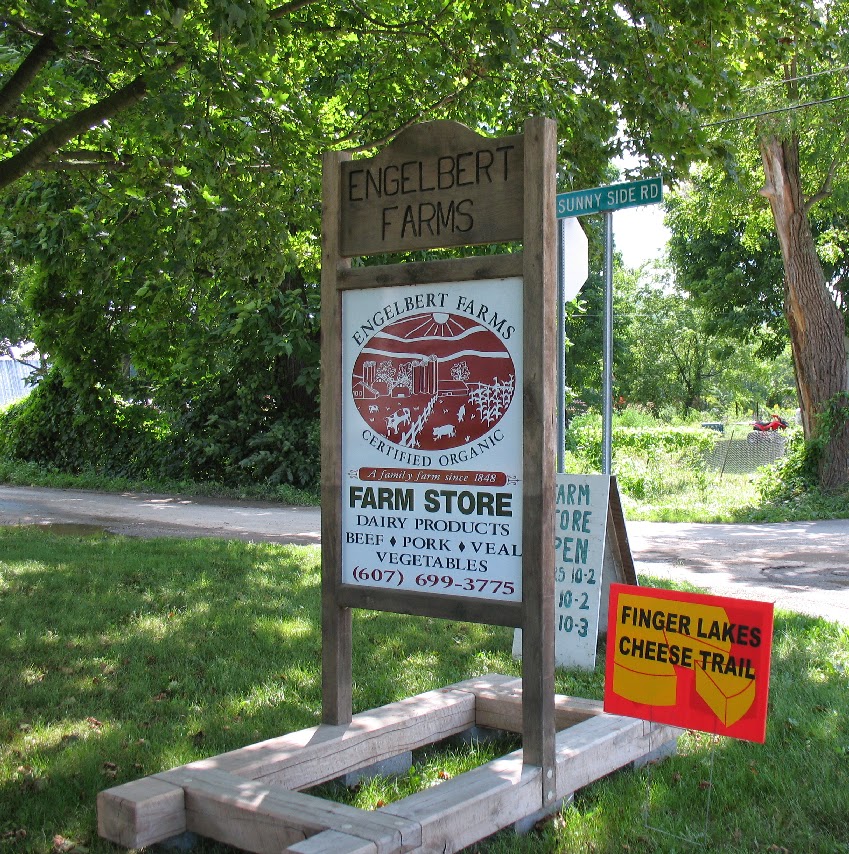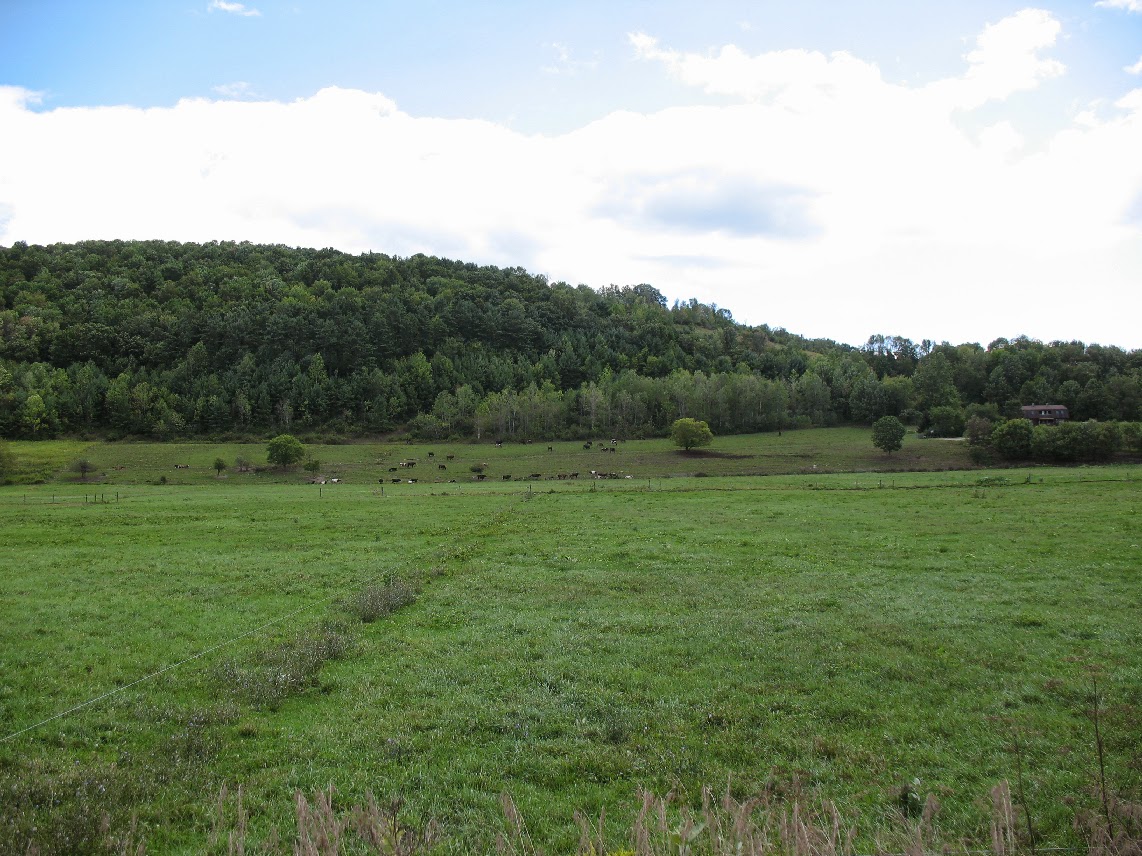This train, the Lakeshore Limited from NYS to Chicago and the California Zephyr from Chicago to California, runs ONCE per day.
The train came into Grand Junction 4 hours late where I got on. Prioritizing of freight traffic, including very long coal trains and very, very long oil trains, made the train more and more delayed.
The above photo of just a tiny piece of a long line of oil cars (one of several lines of cars I saw on my four trips out to Colorado and back) has the BookCliffs in the background, which is subject to drilling and definitely is being fracked as I saw the lights for three gas wells, one after the other, just outside Grand Junction on my second trip out).
An hour before Omaha, NE, we stopped yet again, allegedly due to freight traffic. However, cops were let into the car behind me and I hear dogs were brought on to sniff people and luggage. Two men were taken off in handcuffs, (allegedly for carrying pot across state lines; where they had gotten on I don't know). At least one passenger accused the conductors of lying, that the stop outside Omaha was to wait for the cops to arrive, not due to freight traffic.
The conductor announcing also claimed that, in addition to the freight train movement reason for the 2 hour wait on the track just before Omaha, NE, they had to wait for a change of crew to appear as the maximum train conductors are allowed to work under federal law is 12 hours and from when the current crew had gotten on in Denver, CO, 12 hours had passed. Some passengers claimed that also was a lie. Personally, I found it curious that the conductor who let us on to the Lakeshore Limited train in Chicago onto the car for people getting off at upstate NY stations like Buffalo, Rochester, Syracuse was very present in the car up until at least Syracuse where I got off, more than 12 hours later.
Also, the smokers were not let off for a smoke during our long stop on the tracks outside Omaha and one man got really angry. He also was taken away in handcuffs. Some social media savvy young folks contacted an Omaha TV station. At the Omaha train station, the TV people - Channel 7 KETV, I heard, showed up and interviewed them and others. Some said they felt like AMTRAK had held them hostage. AMTRAK train passenger caught with pot
We were supposed to arrive in Chicago at around 3:00 P.M. Monday. We did not get there until 2:30 A.M. Tuesday, the following morning, unloading into a locked Union Station in Chicago.
Those who missed the connection to the Lakeshore Limited train to NY were presented with a table of crappy, cheap array of highly processed food (i.e. dead food), to line up for vouchers for an overnight at a hotel and $10 cash for breakfast. We lined up around 4:00 a.m. to get onto a coach bus to take us to the motel, which turned out to be about 1/2 hour away on the highway to Indiana. It was a Red Roof Inn in a dangerous, industrial area. Two cop cars were outside my ground floor room after I locked it. I did not gingerly get into bed until 5:00 a.m. I woke up at my usual 7:00 a.m. thus got 2 hours sleep that night. In the a.m. I was the first out into the parking lot to start a line to get back on the bus. As we waited for the coach to come to take us back to Union Station at 11:45 a.m. to catch the next day's train to NYS, I heard that at least one other stranded AMTRAK passenger saw gunshots in his/her motel door. That person or another person saw bloodstains on a door or in the room. If we had any doubt that classism infuses ride by rail in the U.S., i.e. AMTRAK, these experiences completely cleared them. If you choose to ride by rail in the U.S., specifically NYS, it's assumed you are low income and thus low class since you're not driving or not traveling by airplane.
Our departure would not be until 9:30 p.m. a day late from Chicago. Thus we had a lot of time to kill waiting in Union Station or wander around Chicago.
Be prepared!
Take a few carry-ons but a blanket and a pillow are a must.
My train car was freezing with AC. I took a large square of fleece and wrapped myself in it for warmth and to keep out the overhead light overnight. The back of the car to NYS has restroom doors that have to be slammed to get shut. Thus keeping one awake.
The last seats (numbers 1 and 2) are turned around backwards for wheelchair accommodation
If you're lucky enough to have two seats side by side to yourself, tip back both backs, click out both foot rests and you thereby have a sort of bed. Works if you're short at 5 ft. tall. :)
Again, as we made our way across the top of midwest to northeast, we started getting more and more delayed. I was supposed to get into Syracuse at 10:23 a.m. and did not arrive until 5:00 p.m. The person picking me up in Syracuse has to wait 2 hours for me to arrive, thus having to pay $7 for parking in the expensive parking lot.
Carry lots of good food and drink, unless you want to spend a pile of money on train food. Grapes, sealed containers of hummus, dried apples, pears, small packs of cheese, jerky, crackers.
Be well and safe.


